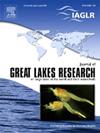Using strain-specific genetic information to estimate the reproductive potential of lake trout spawning biomass in southern Lake Michigan
IF 2.5
3区 环境科学与生态学
Q3 ENVIRONMENTAL SCIENCES
引用次数: 0
Abstract
Lake trout reproduction has increased in Lake Michigan since the 2000 s. Previous genetic studies reported that the strains of stocked adults did not contribute equally to wild recruits. Consequently, reproductive potential of spawning biomass estimated in stock assessments will depend upon strain composition, complicating comparisons across time and space. We integrated data from a stock assessment with genetic data to estimate an effective lake trout spawning biomass that accounts for strain-specific reproductive efficiency. A reproductive power index (RPI) was developed for six strains of hatchery-reared lake trout using genetic data from lakes Michigan and Huron. The RPI is the ratio of the observed to expected genetic contribution of a strain to wild recruits. The Seneca Lake strain had the highest RPI, followed by Lake Manitou, Lewis Lake, Green Lake, Lake Superior, and Lake Huron strains. The RPI in southern Lake Michigan was 2.56 for Seneca Lake, 0.74 for Lake Superior, 0.50 for Lewis Lake, and 0.32 for Green Lake strains. Strain-specific effective spawning biomass in southern Lake Michigan was estimated using numbers stocked, population demographics from a stock assessment, and RPI to develop an annual effective spawning biomass index (ESBI) as a measure of reproductive potential. After 1996, ESBI increased faster than spawning biomass, and continued to increase when spawning biomass leveled off, reflecting the shift toward lake trout strains with higher RPI. The contribution to the ESBI after 2010 was 46 % Seneca Lake, 34 % wild adults, 12 % Lake Superior, and 4 % for the Lewis Lake and Green Lake strains.
利用品系特异性遗传信息估计密歇根湖南部湖鳟鱼产卵生物量的生殖潜力
自2000年代以来,密歇根湖的湖鳟鱼繁殖有所增加。先前的遗传研究报告称,饲养的成年犬的菌株对野生新成员的贡献并不相等。因此,在种群评估中估计的产卵生物量的繁殖潜力将取决于品系组成,使跨时间和空间的比较复杂化。我们将种群评估数据与遗传数据相结合,以估计有效的湖鳟鱼产卵生物量,该生物量可以解释菌株特定的生殖效率。利用密歇根湖和休伦湖的遗传数据,建立了6个孵化场养殖湖鳟的繁殖能力指数(RPI)。RPI是一个菌株对野生新兵的观察到的遗传贡献与预期的遗传贡献之比。塞内卡湖菌株的RPI最高,其次是曼尼托湖、刘易斯湖、格林湖、苏必利尔湖和休伦湖菌株。南密歇根湖塞内卡湖的RPI为2.56,苏必利尔湖为0.74,刘易斯湖为0.50,绿湖为0.32。利用种群数量、种群人口统计数据和RPI方法估算了南密歇根湖种群特定的有效产卵生物量,并建立了年度有效产卵生物量指数(ESBI)作为衡量繁殖潜力的指标。1996年以后,ESBI的增长速度快于产卵生物量的增长,并且在产卵生物量趋于平稳时继续增加,反映了向RPI较高的湖鳟品系的转移。2010年后,塞内卡湖对ESBI的贡献为46%,野生成虫为34%,苏必利尔湖为12%,刘易斯湖和绿湖菌株为4%。
本文章由计算机程序翻译,如有差异,请以英文原文为准。
求助全文
约1分钟内获得全文
求助全文
来源期刊

Journal of Great Lakes Research
生物-海洋与淡水生物学
CiteScore
5.10
自引率
13.60%
发文量
178
审稿时长
6 months
期刊介绍:
Published six times per year, the Journal of Great Lakes Research is multidisciplinary in its coverage, publishing manuscripts on a wide range of theoretical and applied topics in the natural science fields of biology, chemistry, physics, geology, as well as social sciences of the large lakes of the world and their watersheds. Large lakes generally are considered as those lakes which have a mean surface area of >500 km2 (see Herdendorf, C.E. 1982. Large lakes of the world. J. Great Lakes Res. 8:379-412, for examples), although smaller lakes may be considered, especially if they are very deep. We also welcome contributions on saline lakes and research on estuarine waters where the results have application to large lakes.
 求助内容:
求助内容: 应助结果提醒方式:
应助结果提醒方式:


